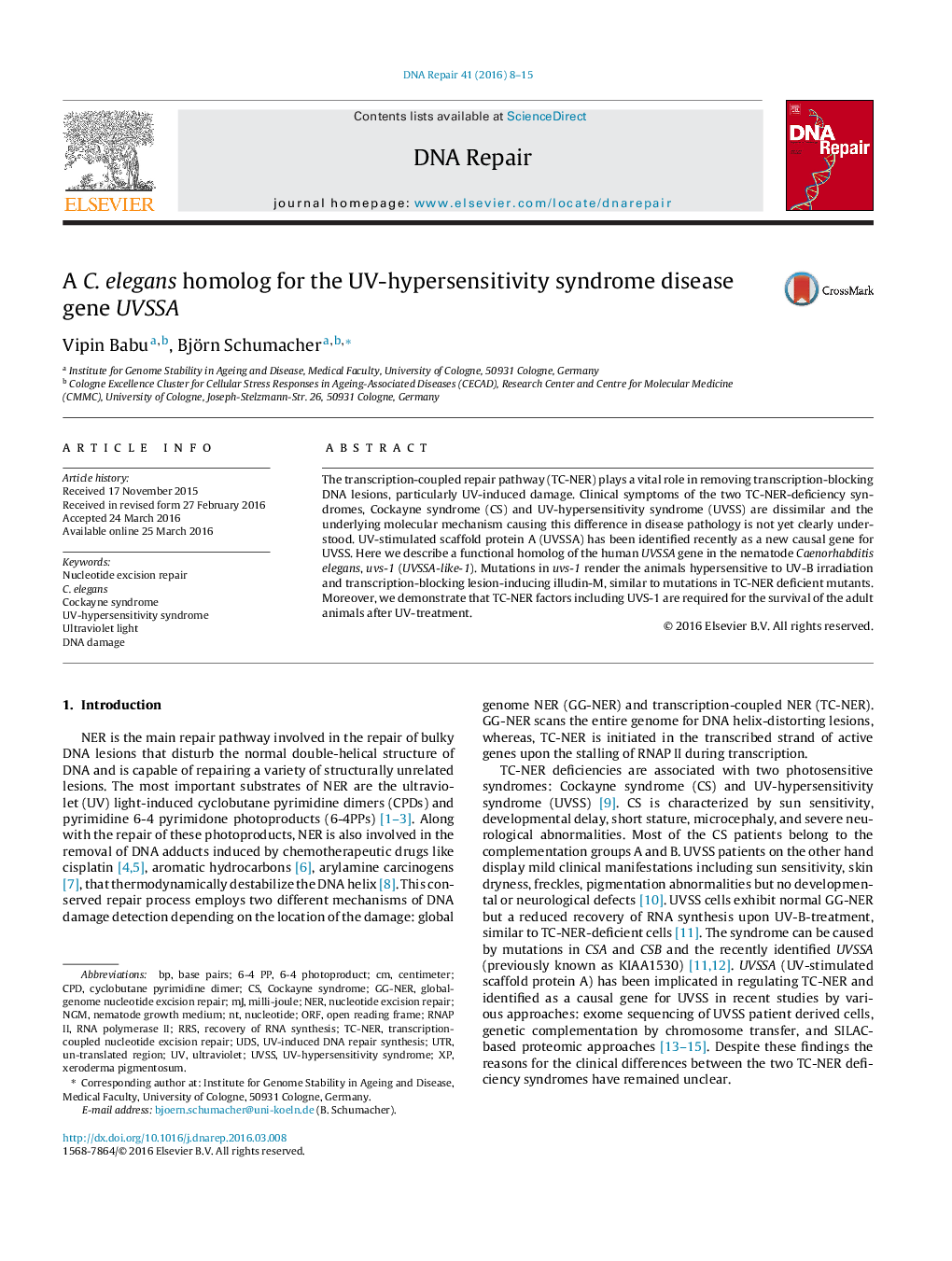| Article ID | Journal | Published Year | Pages | File Type |
|---|---|---|---|---|
| 1979972 | DNA Repair | 2016 | 8 Pages |
Abstract
The transcription-coupled repair pathway (TC-NER) plays a vital role in removing transcription-blocking DNA lesions, particularly UV-induced damage. Clinical symptoms of the two TC-NER-deficiency syndromes, Cockayne syndrome (CS) and UV-hypersensitivity syndrome (UVSS) are dissimilar and the underlying molecular mechanism causing this difference in disease pathology is not yet clearly understood. UV-stimulated scaffold protein A (UVSSA) has been identified recently as a new causal gene for UVSS. Here we describe a functional homolog of the human UVSSA gene in the nematode Caenorhabditis elegans, uvs-1 (UVSSA-like-1). Mutations in uvs-1 render the animals hypersensitive to UV-B irradiation and transcription-blocking lesion-inducing illudin-M, similar to mutations in TC-NER deficient mutants. Moreover, we demonstrate that TC-NER factors including UVS-1 are required for the survival of the adult animals after UV-treatment.
Keywords
6-4 photoproductORFrecovery of RNA synthesisNGMRNAP IITC-NERRRSUDSGG-NERRNA polymerase IIcpdNERUltravioletTranscription-coupled nucleotide excision repairnucleotide excision repairbase pairscyclobutane pyrimidine dimernematode growth mediumcentimeterCockayne syndromeopen reading frameUTR یا untranslated regions Un-translated regionNucleotide
Related Topics
Life Sciences
Biochemistry, Genetics and Molecular Biology
Biochemistry
Authors
Vipin Babu, Björn Schumacher,
